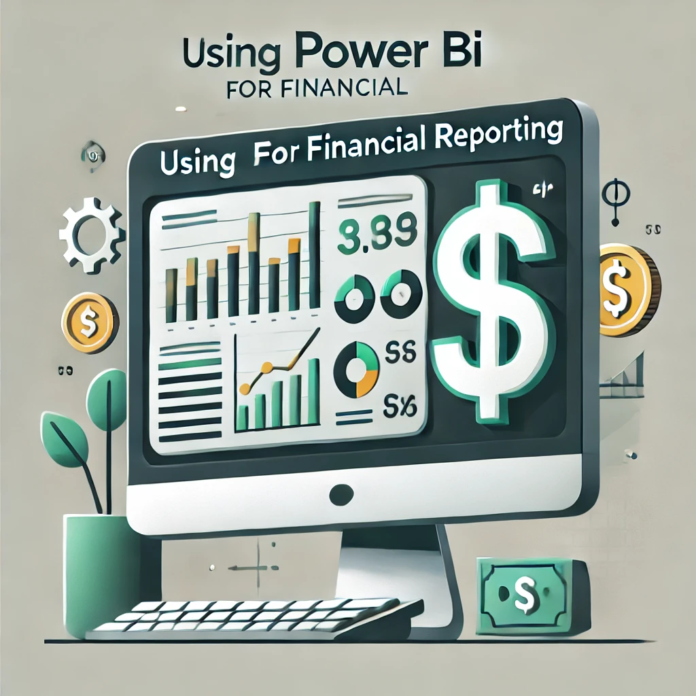Power BI has become a game-changer in the world of financial reporting, offering dynamic and comprehensive ways to manage and analyze financial data. Its advanced visualization tools and seamless data integration capabilities make it a vital resource for finance professionals aiming to elevate their reporting processes. In this blog post, we’ll delve into how Power BI can be effectively used for financial reporting, the benefits it offers, and best practices to ensure you’re making the most out of this powerful tool.
Why Power BI for Financial Reporting?
Power BI’s ability to bring together data from multiple sources, perform complex calculations, and present information through interactive visuals sets it apart as an ideal solution for financial reporting. Here are some reasons why Power BI is particularly beneficial for financial reporting:
1. Comprehensive Data Integration
- Multiple Data Sources: Power BI connects effortlessly to a wide range of data sources, including Excel, SQL databases, cloud-based platforms, and financial systems. This connectivity enables finance teams to consolidate data from different systems into a single, unified view, enhancing the accuracy and comprehensiveness of financial reports.
- Data Aggregation: With Power BI, you can aggregate data from various financial periods, departments, or business units, providing a holistic view of your organization’s financial health.
2. Advanced Data Visualization
- Interactive Dashboards: Power BI offers interactive dashboards that allow users to drill down into financial data, explore trends, and analyze key metrics. Visualizations such as charts, graphs, and gauges provide clear, actionable insights into financial performance.
- Custom Visuals: Beyond standard visualizations, Power BI supports custom visuals tailored to specific financial reporting needs, such as profit and loss statements, balance sheets, and cash flow analyses.
3. Real-Time Data and Reporting
- Live Data Updates: Power BI enables real-time data updates, ensuring that financial reports reflect the most current information. This capability is crucial for timely decision-making and maintaining an accurate picture of financial performance.
- Automated Refreshes: You can schedule automated data refreshes to keep reports up-to-date without manual intervention, improving efficiency and accuracy in financial reporting.
Key Features for Financial Reporting
1. Financial Modeling and Analysis
- DAX Formulas: Power BI uses Data Analysis Expressions (DAX) for advanced calculations and financial modelling. DAX allows you to create custom metrics such as EBITDA, ROI, and financial ratios, providing deeper insights into financial performance.
- Custom Measures: Define custom measures and KPIs (Key Performance Indicators) to track financial goals and benchmarks, ensuring that reports align with organizational objectives.
2. Budgeting and Forecasting
- Scenario Analysis: Power BI’s scenario analysis tools enable users to model different financial scenarios and assess their potential impact. This functionality is invaluable for budgeting and forecasting, helping finance teams prepare for various financial outcomes.
- Trend Analysis: Analyze historical financial data to identify trends and patterns that can inform future financial planning and decision-making.
3. Compliance and Auditing
- Data Security: Power BI ensures data security with features like row-level security and encryption, protecting sensitive financial information. Compliance with regulations such as SOX (Sarbanes-Oxley) can be maintained through robust access controls and data protection measures.
- Audit Trails: Track changes and access to financial reports through audit trails, ensuring transparency and accountability in financial reporting.
Best Practices for Using Power BI in Financial Reporting
1. Designing Effective Dashboards
- Focus on Key Metrics: Highlight key financial metrics and KPIs that are most relevant to stakeholders. Avoid cluttering dashboards with excessive data, as this can dilute the focus and reduce clarity.
- User-Friendly Layout: Design dashboards with a user-friendly layout that is intuitive and easy to navigate. Use clear labels, legends, and tooltips to enhance usability.
2. Ensuring Data Accuracy and Integrity
- Validate Data Sources: Regularly validate and cleanse data from financial systems to ensure accuracy. Inaccurate data can lead to incorrect financial reports and misguided decisions.
- Test Calculations: Thoroughly test DAX formulas and custom measures to ensure they accurately reflect financial calculations and metrics.
3. Implementing Security Measures
- Role-Based Access: Implement role-based access controls to restrict data visibility based on user roles. This ensures that sensitive financial information is only accessible to authorized individuals.
- Monitor Access: Regularly monitor and review user access and permissions to maintain data security and compliance.
4. Providing Training and Support
- User Training: Provide training for users on how to navigate and utilize Power BI financial reports effectively. This ensures that stakeholders can make the most of the available features and insights.
- Ongoing Support: Establish a support mechanism to assist users with any issues or questions related to Power BI reports. This can include a helpdesk, documentation, or regular Q&A sessions.
Conclusion
Power BI offers a transformative approach to financial reporting, providing powerful tools for data integration, visualization, and analysis. By leveraging its features, finance professionals can enhance their reporting processes, gain deeper insights, and make more informed decisions. Adopting best practices for designing dashboards, ensuring data accuracy, implementing security measures, and providing training will maximize the effectiveness of Power BI in financial reporting. Integrating Power BI into your financial reporting workflow not only streamlines the reporting process but also enhances the quality and impact of your financial insights. Whether you’re a financial analyst, CFO, or business owner, mastering Power BI can significantly improve your financial reporting capabilities and drive better decision-making for your organization.






